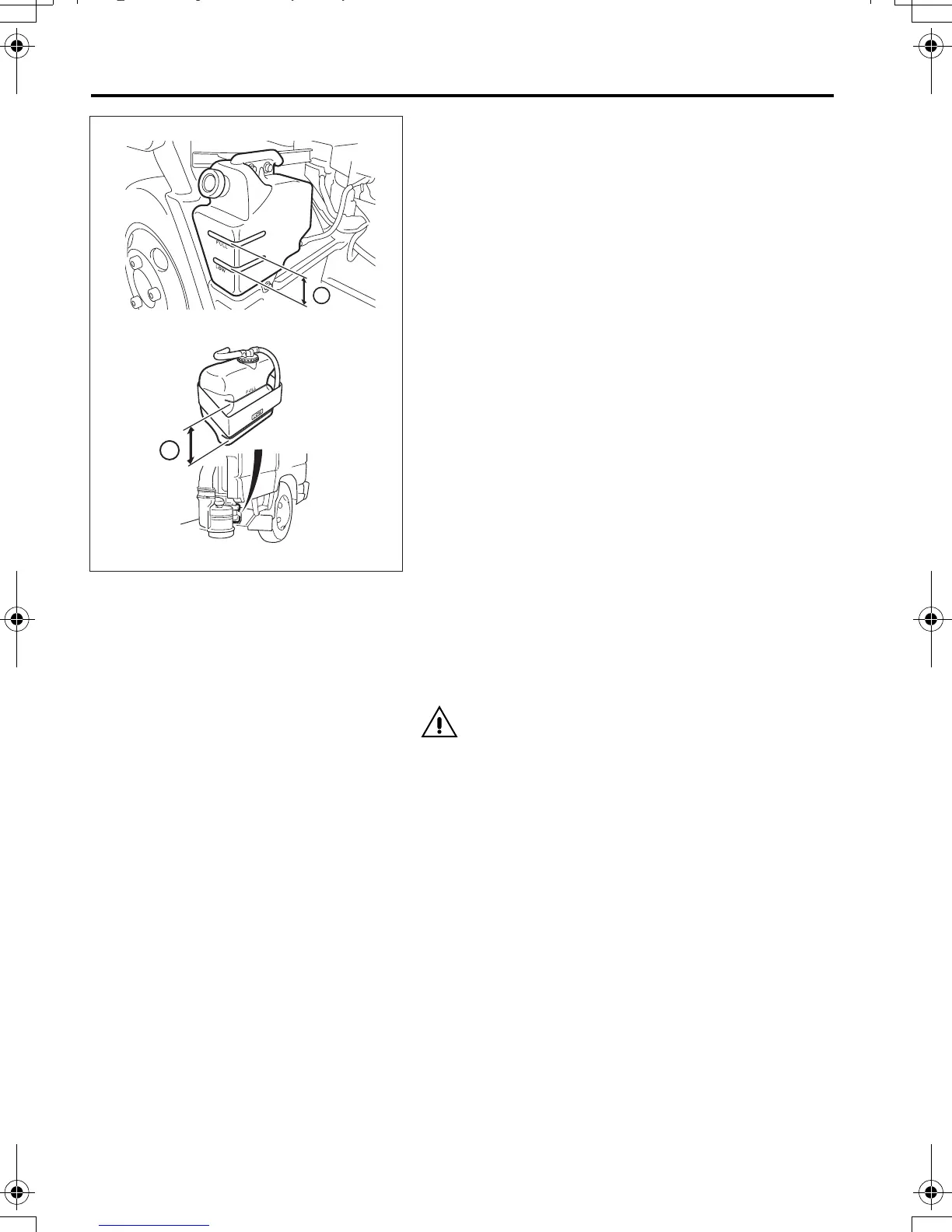12-52 Simple inspection and service
4 Check
NOTE:
• Always check the coolant level before starting
the engine when the coolant temperature is low.
When the coolant gets hot, it expands, making
the level look higher than it actually is.
• Deposition may occur in the reserve tank but
this will not cause any problem.
• The coolant level is sufficient if it is between the
“FULL” and “LOW” marks on the coolant reser-
voir tank.
• If the coolant level is below the “LOW” line,
make sure coolant is not leaking from the cool-
ing system then add coolant until it reaches the
“FULL” line.
• Check for coolant leakage from the radiator and
radiator hoses.
If you find water on the ground from which your
vehicle has been moved after parking, coolant is
probably leaking.
• If the coolant level is abnormally low and quickly
drops again when coolant has been added,
coolant may be leaking from the cooling system.
Have the vehicle inspected by your nearest
authorized dealer.
5 Adding coolant
CAUTION
• Coolant should normally be added through
the reservoir tank without opening the pres-
sure cap on the engine.
• When adding coolant, use new coolant addi-
tive of the same brand and concentration as
the additive that is already in the vehicle.
• Adding only water reduces the concentra-
tion of the coolant already in the system,
resulting in less protection against freezing
and corrosion. Additional coolant should
always contain the correct proportions of the
additive and soft water.
5.1 Adding coolant during pre-operation
checks
1. If the coolant level is below the “LOW” mark,
remove the cap from the reservoir tank, and refill
the tank with a mixture of FUSO DIESEL
LONGLIFE COOLANT and soft water to the
“FULL” mark.
2. Refit the cap securely after adding coolant.
Z12075
<Crew-cab models>
FE_FG.book Page 52 Wednesday, January 14, 2009 7:08 PM

